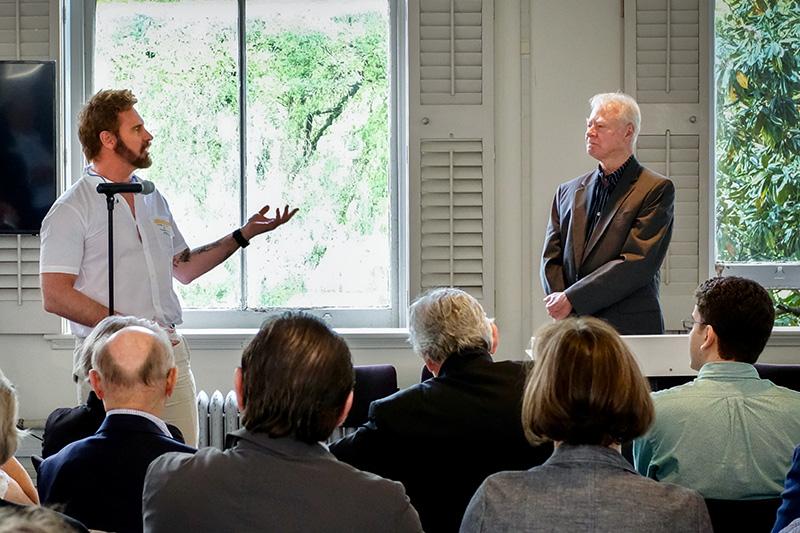What’s next for architecture education?
Preparing future architects to design spaces that are compelling and community-centered was a focus of conversation at “Talk About Architecture: Retrospect & Prospect,” a symposium held at the Tulane School of Architecture on April 7.
Hosted by Favrot Professor of Architecture John P. Klingman, the event brought together more than 150 alumni, faculty, students and friends to discuss the evolution and future of architectural education at Tulane and beyond.
Alumni, some traveling from as far away as Shanghai, shared ways their education succeeded or was less relevant in the real world during two open forums. Klingman structured the event to be alumni focused, drawing generations of graduates back to their alma mater.
During the keynote speech, Klingman stressed that for the sometimes-insular architecture profession to remain viable, architects must find ways to engage with the public.
“It is just as important for us to be outside the building as it is for us to be inside the building,” said Klingman. “Even though a project can be architecturally significant, if it doesn’t have a living program and people are not actively using it, it’s just not good.”
“The practice of architecture fundamentally changes every few years,” said Dan Maginn, a 1989 architecture graduate from Kansas City, Missouri, who spoke during a forum. “Regular dialogue between practitioners, faculty and students encourages an awareness of this ever-changing dynamic, and energizes the experience of practicing, teaching and learning about architecture.”
Special guests including former Tulane School of Architecture faculty members Ben Ledbetter and Mark Shapiro, former dean Donna Robertson, and Deborah Gans, a Pratt Institute professor and a longtime friend of the school, stimulated the discussion with insight from successful careers in education and practice.
“Talk About Architecture” marked Klingman’s retirement at the end of this academic year. Many alumni attended to celebrate and share stories of the impact from his 35 years of teaching and mentorship.

